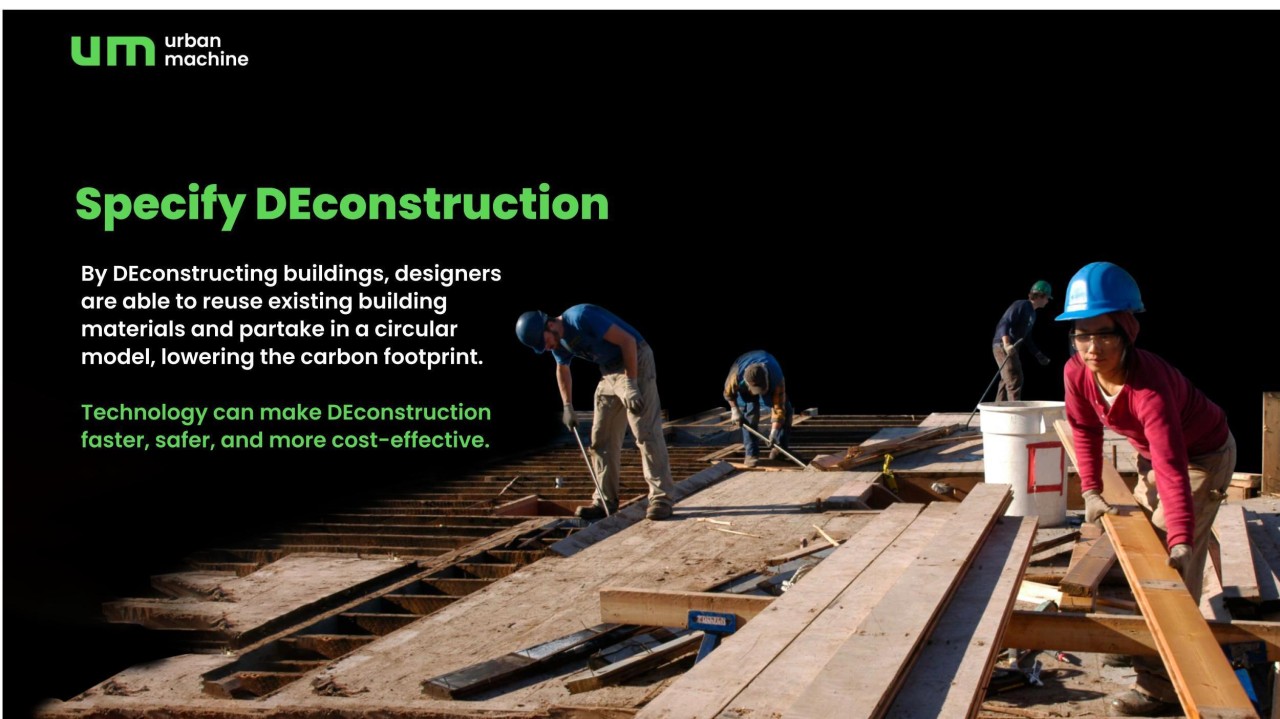
DEconstruction: The Greener Choice
DEconstruction is a method of building removal that involves carefully dismantling a structure to recover valuable materials for reuse that would otherwise be discarded during the removal process. Compared to demolition, which involves destroying a building and sending most of the materials to the landfill, DEconstruction is much more beneficial for the environment, the economy, and society.
It is important to note that DEconstruction and demolition are not opposing concepts. Both processes remove an existing building, however, demolition involves the destruction of a building creating waste, while DEconstruction involves dismantling a building to preserve the utility of the structure’s materials, creating value.

One of the primary advantages of DEconstruction is the capture of valuable building materials for reuse. According to the US Environmental Protection Agency, construction and demolition debris account for approximately 40% of all solid waste generated in the United States, making it the largest contributor to landfills. By recovering materials like lumber, steel, and concrete for reuse, DEconstruction significantly reduces waste and conserves natural resources. In fact, the US Forest Service estimates that reclaimed wood from DEconstruction projects can save up to 20 million trees per year.
DEconstruction also supports a circular economy by keeping valuable resources in use. Through the recovery of materials for reuse, DEconstruction reduces the need for virgin resources and minimizes the environmental impact of new construction. Additionally, reclaimed wood has several environmental benefits, including reduced greenhouse gas emissions and improved air and water quality. The unique aesthetic of reclaimed wood also adds character and charm to new construction projects.

Urban Machine, a robotics company committed to supporting sustainable practices in construction, offers an innovative solution to make DEconstruction more efficient, affordable, and accessible. Urban Machine’s robot reclaims wood waste by removing metals from the wood, readying it for reuse as premium lumber. This automation of the reclamation process lowers the cost basis of recovered materials, making reuse a viable option.

According to The Building Material Reuse Association (BMRA) Model Guide Specifications, during DEconstruction, building materials must be handled in a manner that preserves “the value of recovered materials for reuse”. In order to promote sustainability through resource preservation, the BMRA is developing a library of technical documents to assist DEconstruction enthusiasts and the whole building industry.
Architects and builders play a critical role in promoting sustainable construction practices and specifying the use of reclaimed materials in their designs. By prioritizing DEconstruction and material recovery, they can help reduce the environmental impact of the construction industry and promote sustainable practices.

DEconstruction offers several advantages over demolition. Reclaimed wood, in particular, has numerous environmental and character benefits for new construction. By embracing DEconstruction and material recovery, we can build a more sustainable future for our communities and the planet.
GreenTech Co - Founder & CTO | Technology Leader | Inventor | Advisor | Ex Amazon Leadership
12mo👍